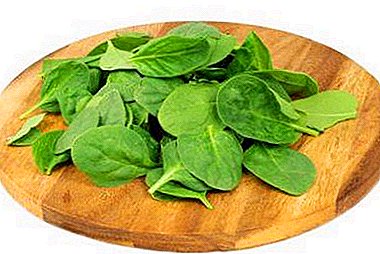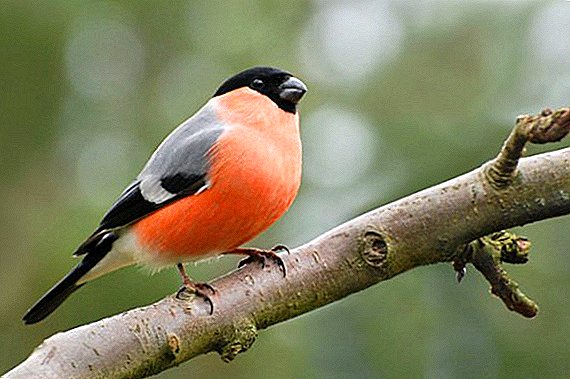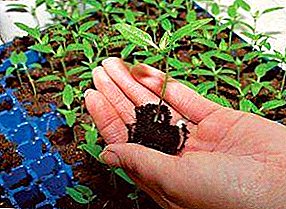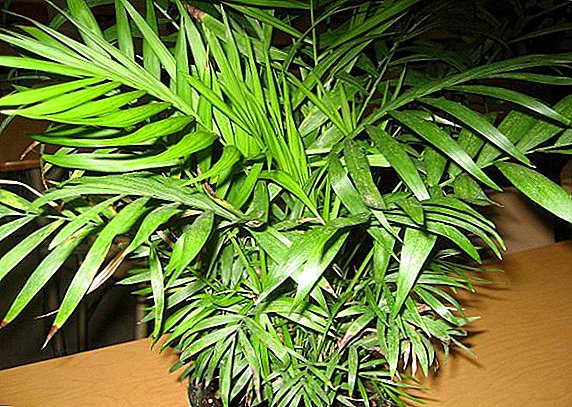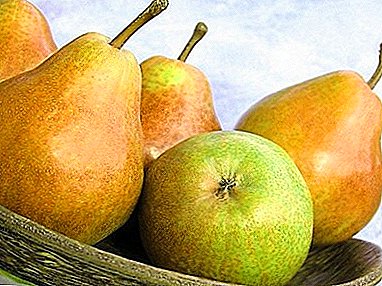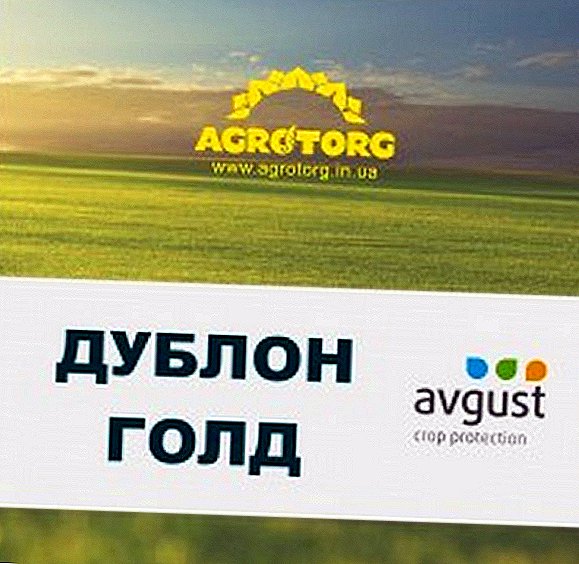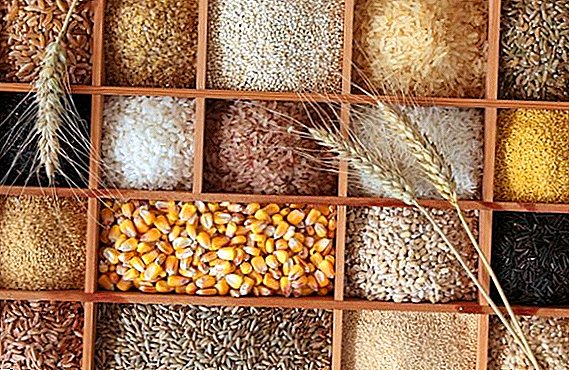 Know the features of each group of crops is necessary for those who are going to engage in their cultivation. From this depends on yield and future profits. Also for many crops, it is necessary to create special growing conditions, without which the plant will not yield a crop or will die at all. Consider the most important cultures.
Know the features of each group of crops is necessary for those who are going to engage in their cultivation. From this depends on yield and future profits. Also for many crops, it is necessary to create special growing conditions, without which the plant will not yield a crop or will die at all. Consider the most important cultures.
Cereals
All representatives of this culture belong to the genus of bluegrass. They are divided into bread and legumes. 
The first group has more than 10 representatives:
- wheat;
- barley;
- quinoa;
- oats;
- rye;
- spelled;
- millet;
- corn;
- buckwheat;
- triticale;
- sorghum.
Important! Whole grain products will bring great benefits to the body. Unrefined grain is a source of fiber, vitamins and minerals. Products from such grains are useful during diets and for maintaining a figure.

These plants are characterized by a fibrous root system, which often reaches almost 3 meters in length. It actively grows in the dry period of summer, which helps the plant to penetrate as deep as possible into the soil and absorb more nutrients.
The power of each crop is different: rye has a stronger rhizome than wheat, and oats have more barley. This advantage allows the grain to absorb more moisture from the soil and grow faster.
Check out the main types of cereals.
Seeds of representatives of grain after planting germinal roots. Rice, corn, millet, sorghum have one such.
And the following types grow from 2 pieces:
- barley - up to 8;
- rye - 4;
- wheat - up to 5;
- oats - up to 4;
- triticale - 6.

On the stalks of grain there are up to 7 knots, from which leaves are long and close to the stem. At the top of the stem up to 5 flowers, collected in spikelets.
Inflorescences can be spike (wheat, rye, barley) and a panicle (millet, sorghum, rice). The first type means that the spikelets are located in two rows, and the second one - one on the side branch.
All fruits of cereals are called grains, or karyops. Their main characteristic is accrete seed and fruit shells.
Cereals have three phases of ripeness:
- dairy;
- wax;
- complete.
Harvest when the wax when the grains are yellow, and inside the texture is similar to wax. It is early to collect in the dairy phase, because almost half of the content is water. Harvesting at full phase is possible only by combining, since the grains are already so solid that they crumble. 
Did you know? Spelled - one of the ancient grain crops. In 4-5 thousand BC. er representatives of Tripoli culture squeezed these grains ornament on ceramics.
Legumes
This group is the richest in protein. Pulses advise vegetarians and people allergic to cow's milk protein to be included in the diet.
Representatives of the group more than 60, but the most popular:
- peas;
- chickpeas;
- soybean;
- lupine;
- beans;
- lentils.
The rhizome of this culture is pivotal. The main root grows into the ground to a depth of 3 m, where it begins to let the side roots. 
For good growth, the plant needs loose, fertilized soil. The peculiarity of legume roots is the secreted acids, which help to dissolve such heavy fertilizers as phosphates.
Phosphates include such fertilizers as Ammophos, superphosphate, double superphosphate, bone meal.
The stem is grassy, it can be of different strengths. The stems of many representatives of the culture branch. Lodging is not typical for them. In beans, soybean, chickpea and lupine, the stems are straight and firm.
The leaves are paired and opnopalnopchatye, trifoliate, palmate. The first option is typical for peas, lentils, beans, chickpeas, the second for soybeans and beans, and the third only for lupine.
Pulses that do not tolerate cotyledons are considered seedlings when leaves appear above the ground. The rest - with the appearance of cotyledons. Next comes the flowering stage, and after - maturation. Crop harvested when the bean turned brown. 
Feed
Representatives of this culture are grown specifically for feeding farm animals. Plants are sown pasture, as well as separately designated areas. Sowing of feed crops is already becoming a separate industry, which is called fodder production.
Harvest used for lining in the barn, as an additive in the hay. These plants are rich in protein, vitamins and minerals.
Among the common feed can be distinguished:
- legumes (clover, alfalfa, sweet clover);
- cereals (meadow timothy and ovsyannitsa, wheatgrass, hedgehog team).
These are all perennials, which can grow both separately and in company with other neighbors of this culture. 
They are characterized by a fibrous rhizome. The peculiarity of this group is that nodule bacteria live on their roots. They, in turn, saturate the soil with nitrogen, restore fertility and increase the amount of organic matter.
Fodder representatives are very selective to the place of growth - they will not survive in arid regions, moisture in the ground is important for them. Therefore, to obtain a good harvest, it is necessary to ensure high-quality watering, if there are precipitation problems in the region.
You also need to ensure that the soil was with an average level of acidity. For legumes need phosphate fertilizers.
In good conditions, the plants give a rather big harvest. For example, clover - up to 250 kg / ha, and alfalfa with additional watering - up to 800 kg / ha. Chumiza, sorghum, Sudan grass, and Mogar will take root in dry places better. 
Since fodder seeds are very small, it usually takes up to 20 kg per hectare. The only exception is salvage - up to 90 kg.
Oilseeds
This group is grown for technical and edible oils.
This includes mainly herbaceous perennial and annual plants:
- sunflower;
- linen;
- peanut;
- rape;
- soybean;
- mustard.
Also more popular are oils from the fruits of tropical trees:
- palm trees;
- cocoa;
- tung

Oils can be fatty (sunflower, rapeseed, etc.) and solid (coconut, cocoa). The seeds and fruits of these plants contain from 16 to 60% oil. These indicators vary depending on the characteristics of the growing region.
The southeastern regions allow a greater oilseed yield due to the predominantly warm weather with average humidity.
Important! Most of the plants of this culture are considered tilled. This means that after them the crops will grow well. After all, their roots grow so much that they drown out the weeds in this area. Therefore, for the following plantings, the land will be prepared for a positive growth rate.
For these plants, you need to further fertilize the soil - phosphate, nitrogen and potash fertilizers will be required. It is also important to monitor the temperature regime and, if necessary, cover the plants. So, peanuts can disappear at temperatures below 0 ° C. 
On the other hand, saffron milk mustard and weak frosts can move. The optimum temperature for all types of oilseeds is from +18 to +20 ° С.
It will be possible to receive a harvest from the moment of sowing in 75-150 days. Castor bean and peanuts mature the longest.
Get the finished oil product can only be in production. Before this, the raw material is separated from impurities. The kernels, in turn, are cleaned of the shell, crushed, moistened and sent to the roaster.
Next, the product is extracted in two ways:
- press;
- extraction (extraction of oil using a special solvent).
Essential oils
Plants from this culture are grown to produce essential oils.
To obtain the essential oils, oregano, citronella, and lavender are also used.
They are used in cosmetology, in production, in cooking, in perfumery. In total there are more than 200 species of plants that produce essential oils. 
Among them:
- caraway;
- coriander;
- sage;
- the Rose;
- anise;
- geranium;
- mint;
- citrus;
- coniferous trees.
In each of these plants, either branches or leaves are responsible for producing oils. Often extracted oil from flowers and fruits. They are produced by special cells, have a specific smell. They contain alcohols, terpenes, aldehydes and more.
Almost half of all essential oil plants are grown in the tropics and subtropics - these are citrus fruits, cinnamon, cloves. Basil, sage, patchouli, dill are suitable for temperate climates. 
Essential fluid in a single plant can be up to 25%. Also up to 45% there are fatty oils. You can extract the essential oil by distillation using water vapor. After that, the usual oil is extracted using special solvents.
Technical
Industrial crops are grown to produce industrial raw materials. Their separate parts or a plant entirely are used.
There are such types:
- spinning (hemp, jute, flax);
- bast (potato, sweet potato);
- oilseeds (sunflower, peanuts);
- dyeing (madder);
- medicinal (needles, eucalyptus, mint);
- sugar beet (beet, cane);
- tonic (coffee, tea, cocoa);
- rubber (hevea brazilian).
Among the spinning or fibrous, as they are called, cotton is the most popular. 
It is used for making clothes, oils and as animal feed. Produced most in China, India, USA, Brazil. It is difficult to mine - it is done by hand.
Did you know? Flax has been used for making clothes for more than 10 thousand years.
Sugar crops are mostly exported from Europe - Ukraine, Russia, France (beetroot) and Brazil, Mexico, Cuba (cane). Most of the world sugar production falls on the cane (60%).
Of the bast crops, potatoes are the most popular and sought after. It is needed for the production of starch and alcohol. For tonic cultures, tropics and subtropics are needed. Tea exporters are mainly India, China, and coffee and cocoa are Brazil. 
Vegetable
Growing vegetables for their consumption in food, selection and harvesting of these crops is in charge of vegetable growing. There are more than 100 species of vegetable crops.
They are:
- fruit and vegetable;
- leafy;
- bulbous;
- root vegetables.
It also includes cereals, for example, corn, legumes. There are representatives of this group annual, biennial and perennial.
Vegetables are divided into many groups that are more convenient to use in agricultural studies and merchandising. 
The most common group is agronomic:
- tuber crops - potatoes, sweet potatoes;
- fruit solanaceae - pepper, tomato, eggplant;
- pumpkin - cucumber, pumpkin;
- melons - melon, watermelon;
- legumes - peas, beans, chickpeas;
- bulbous leeks, shallots, garlic;
- root vegetables - carrots, beet, turnips, celery;
- cabbage - cauliflower, white cabbage, red;
- green lettuce - Romain, Chinese cabbage, lettuce;
- mushrooms;
- spinach - spinach;
- perennials - artichoke, horseradish, sorrel.

All vegetables go through these phases of their lives:
- seed stage - their germination from the ground, when they collect moisture, so that the enzymes go into action and create conditions for root growth;
- seedling phase - after the appearance of cotyledons above the ground, the plant switches to the autotrophic mode of life;
- the growth of vegetative organs - is the construction of the rhizome and leaves, and then on the organs of the stock (tubers, roots);
- the growth of stems - in annual plants, this phase goes along with the previous one, in two-year-olds - in the second year of life;
- budding - the formation of buds and their further preparation for flowering;
- flowering - pollen and ovary ripen in each flower, the phase ends with pollination;
- fruit growth - the formation and increase in the size of the fruit, ripening in them seeds and nutrients;
- fruit ripening - the color changes, nutrients pass into an inactive state;
- embryonic phase - the seeds are prepared for further germination, the organs of the following plants appear on them.

Medicinal
More than 21 thousand plant species are used in the production of medicines, in traditional medicine and for the prevention of various diseases. This group combines a vast number of plants, including the most popular ones: calendula, lingonberry, chamomile, aloe, licorice, mint, sage, dog rose and others.
Did you know? Sumerian treatises dating back to the 3rd millennium BC. e., have 15 prescription drugs based on mustard, fir, willow, pine and fruit fruits. Over 3 thousand years BC. er medicinal cultures were also used in Egypt, India, China.
There is such a classification of these cultures:
- official medicinal plants - their raw materials are allowed to be used in medical preparations, the list can be found in the state register of medicinal products of the Russian Federation;
- Pharmacopoeias are official plants, they have certain requirements on the quality of the raw materials themselves;
- plants of traditional medicine - do not have proof of their effectiveness in the relevant documents.

Each of these representatives of the drug group has one or more active ingredients. They can be concentrated in different parts of the plant or only in one, therefore, when collecting and using, it is necessary to know what a part of the plant is in order not to be mistaken.
From herbs and fruits make infusions, decoctions, oils. Production of both liquid and powder-like drugs is possible.
Floral
Representatives of this group are divided into perennials and annuals. The first can grow in the same area without a transplant from 2 to 40 years. The longest are the peonies living in one place - from 30 to 40 years. The more the bushes of one plant grow, the less it will be able to live on the spot.
Depending on the type of root system, such perennials are distinguished:
- rhizome - iris, phlox, astilba;
- bulb - tulip, narcissus;
- corm - gladiolus, canna;
- Korneklubni - dahlia, orchid.

It is possible to propagate such plants both vegetatively and by seeds. The second option is used in industrial plantings, as this process is serious. Seeds should be divided into varieties, they need preliminary preparation (soaking, hardening).
Also, there are seeds that sprout hard - lupine, poppy, cyanosis, which must be sown in the fall.
Vegetatively propagated in such ways:
- cuttings;
- root processes;
- division of the root or bush;
- rooting of the flower in the greenhouse.
Important! The perennial peculiarity is that they need quality care. During the season they absorb all the necessary substances from the soil, leaving it empty. Therefore, it is necessary to fertilize and feed the places of their growth up to 2 times a year. It is necessary to loosen and water the soil. For the winter, the bulbs are dug or covered.

Annuals carry out their life program for the year - they are sown in spring, and in the fall they bloom and die. They spend a lot of energy on their growth - shoots visible after 7 weeks from sowing. Blossom depending on the variety and conditions.
By the end of their lives, seeds are being seized, which will serve for planting next year. They can be stored for up to 4 years. Sow them in early spring, in April. This procedure can be done in boxes, and with the advent of the first shoots they are resettled in open ground. They need wet, aerated earth.
The annual flowers are sweet peas, delphinium, verbena, cornflower, marigold, Chinese carnation, left, dahlias and others.
Fruit and berry
This group is grown to produce berries, nuts, and fruits. There are over a thousand varieties of fruit plants. 
Absolutely all of them - perennials, which are evergreen and deciduous. They can be cultivated or wild.
Most of all fruit grows in the Caucasus, in Asia Minor and Central Asia - a little less than a hundred. Among them are figs, pomegranates, pistachios, almonds, and loquat. More rare fruit and berry can be found in exotic countries. For example, for East Asia, there are lychees, unabi and lokva.
There are such groups:
- woody - walnut, cherry, apricot, avocado, peach, orange;
- non-lignificant perennials - papaya, melon tree;
- bushy - coffee, lime, carambola;
- bush - currant, raspberry;
- lianovye - grapes, lemongrass;
- herbaceous perennials - blueberries, cranberries, banana, pineapple.
There are various classifications of fruit and berry crops, which are based on the purpose of cultivation, the structure of fruits, composition, and places of growth. 
According to the structure and origin of the fruit, such cultures are distinguished:
- sunflower seeds - mountain ash, quince, pear;
- stone fruits - cherry, dogwood;
- berry - raspberry, strawberry;
- walnut - pistachio, hazel;
- citrus fruits - grapefruit, lemon;
- subtropical - persimmon, fig.
In berry crops, seeds grow from the ovules of the ovary, and their flesh surrounds them. Most berries have a receptacle with pistils. And when each pistil is fertilized, the fruit grows from it. For example, strawberries, raspberries, blackberries, blueberries, cranberries.
Did you know? A person uses from 39 to 50% of the land surface for agricultural needs.

So, crops began to play an important role in the lives of our most distant ancestors. Grains, fruits, nuts, roots allowed to survive in the absence of the food industry. Each culture has its own purpose and purpose - to feed people, animals or to be the basis of drugs.
We considered the most important agricultural crops, which even today humanity continues to develop, select and increase.


